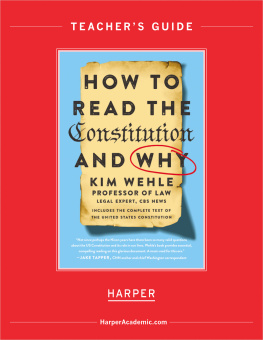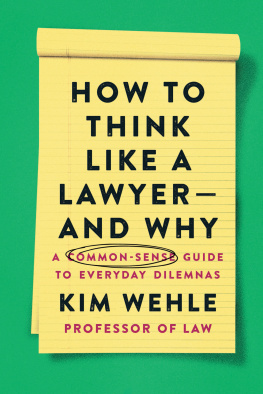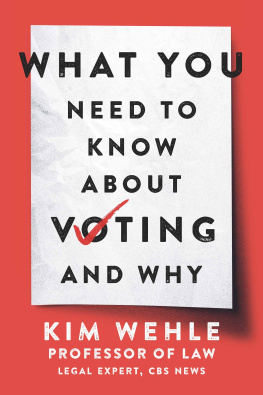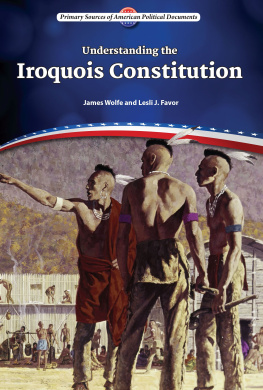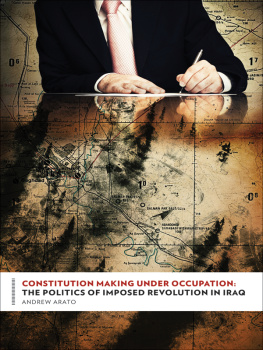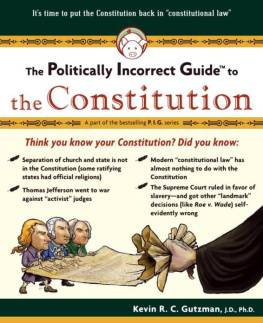Kim Wehle - How to Read the Constitution--And Why Teaching Guide
Here you can read online Kim Wehle - How to Read the Constitution--And Why Teaching Guide full text of the book (entire story) in english for free. Download pdf and epub, get meaning, cover and reviews about this ebook. year: 2021, publisher: HarperCollins, genre: Politics. Description of the work, (preface) as well as reviews are available. Best literature library LitArk.com created for fans of good reading and offers a wide selection of genres:
Romance novel
Science fiction
Adventure
Detective
Science
History
Home and family
Prose
Art
Politics
Computer
Non-fiction
Religion
Business
Children
Humor
Choose a favorite category and find really read worthwhile books. Enjoy immersion in the world of imagination, feel the emotions of the characters or learn something new for yourself, make an fascinating discovery.
How to Read the Constitution--And Why Teaching Guide: summary, description and annotation
We offer to read an annotation, description, summary or preface (depends on what the author of the book "How to Read the Constitution--And Why Teaching Guide" wrote himself). If you haven't found the necessary information about the book — write in the comments, we will try to find it.
Kim Wehle: author's other books
Who wrote How to Read the Constitution--And Why Teaching Guide? Find out the surname, the name of the author of the book and a list of all author's works by series.
How to Read the Constitution--And Why Teaching Guide — read online for free the complete book (whole text) full work
Below is the text of the book, divided by pages. System saving the place of the last page read, allows you to conveniently read the book "How to Read the Constitution--And Why Teaching Guide" online for free, without having to search again every time where you left off. Put a bookmark, and you can go to the page where you finished reading at any time.
Font size:
Interval:
Bookmark:
- It provides a framework for working through each chapter. Ive found from years of teaching that a skeletal, thematic structure can greatly assist people in comprehending new and sometimes difficult legal concepts.
- The guide offers three sets of questions after each chapter to prompt further discussion around the books broader themes.
- Article I (Congress and legislation)
- Article II (President and law execution)
- Article III (Judges and adjudication of discrete disputes)
- The Bill of Rights (first 10 Amendments)
- Later Amendments to the Constitution
- Consequences for violating laws and norms are vital if laws are to mean anything.
- Policy and politics are very different.
- Increased government power usually means increased government power for keeps.
- Words have different meanings, including those contained in the Constitution.
- American values are not in the text of the Constitution, so how are they upheld?
- Nobody in government is supposed to be above the law under our Constitution.
- Lawlike lifeis not black and white, but many shades of gray.
- Scroll through your newsfeed. Identify a story that discusses a government policy. Then identify a story that discusses politics. Explain how they are different. For bonus points, identify a story that combines policy and politics, tease those two themes apart, and ask yourself: which matters most to you?
- Think of a time in which you broke a ruleor witnessed someone else break a ruleand nothing happened. Was the lack of consequences a bad thing? If not, think of another time that someone broke a rule, got away with it, and it did turn out to be a bad thing. Now think of a time that a government actor broke a rule and faced the consequences. What if that person had gotten away with it? Does it matter if the rule-breaker is the government versus a private person? Why or why not?
- Why do you think the framers broke up government into three parts? What would happen if any one of the three parts disappeared. Would it affect how government operates? Perhaps more importantly, what happens to the rights of the individual when one of the branches becomes powerless? Why was the Bill of Rights added to the Constitution in the first place?
- What the Vesting Clauses are
- How the Amendments to the Constitution differ from the three main Articles
- Think the Bible, Torah, Koran, poetry.
- The terms legislative or executive, for example, can have different meanings.
- Separation of powers
- Checks and balances
- Overlapping powers of government
- Government by We the People
- Why does it matter that each branch stays in its constitutional sandbox? Why is it a problem if the president makes the laws and also executes them? Or if Congress makes the laws and also decides who broke them? Or if judges prosecute violations of the law (i.e., executes the laws) and also decide whether the person being prosecuted actually violated a law?
- How do federal agencies do all three things that the three branches of government do? What about private companieshow do they sometimes do all three things? Should the Constitution even care that the three branches arent the only government actors? Why or why not?
- Think of an alternative model of governmentsay, a monarchy or a parliamentary government (where the legislature picks the prime minister), as in England. Why do we have what we have instead of those models? Imagine that you open an ice cream shop and need to set up an organizational structure. How would each of these models of governance likely to work out?
- Shall does not strictly mean shallthe executive branch also makes laws.
- Congress is also constrained by the states.
- Congress can use these so long as it does not violate another part of the Constitution.
- Congress does things other than raise money by the taxing power (e.g., regulating firearms).
- A big source of congressional power
- Necessary has been equated with useful, giving Congress lots of leeway under the Necessary and Proper Clause.
- Another big source of congressional power
- Allows Congress to make laws that have an effect on commerce, which can be broadly and/or narrowly read
- The Emoluments Clause bars office-holders (including the president) from accepting any present from a foreign State unless they have the Consent of Congress.
- Impeachment is a trial in Congress, it applies to more officials than just the president, and it is appropriate for high Crimes and Misdemeanors, which are not the same as a crime under the criminal laws that could put people in jail.
- Both the Emoluments and Impeachment Clauses have become ineffective as a check on the president because they are not enforced by Congress.
Font size:
Interval:
Bookmark:
Similar books «How to Read the Constitution--And Why Teaching Guide»
Look at similar books to How to Read the Constitution--And Why Teaching Guide. We have selected literature similar in name and meaning in the hope of providing readers with more options to find new, interesting, not yet read works.
Discussion, reviews of the book How to Read the Constitution--And Why Teaching Guide and just readers' own opinions. Leave your comments, write what you think about the work, its meaning or the main characters. Specify what exactly you liked and what you didn't like, and why you think so.

